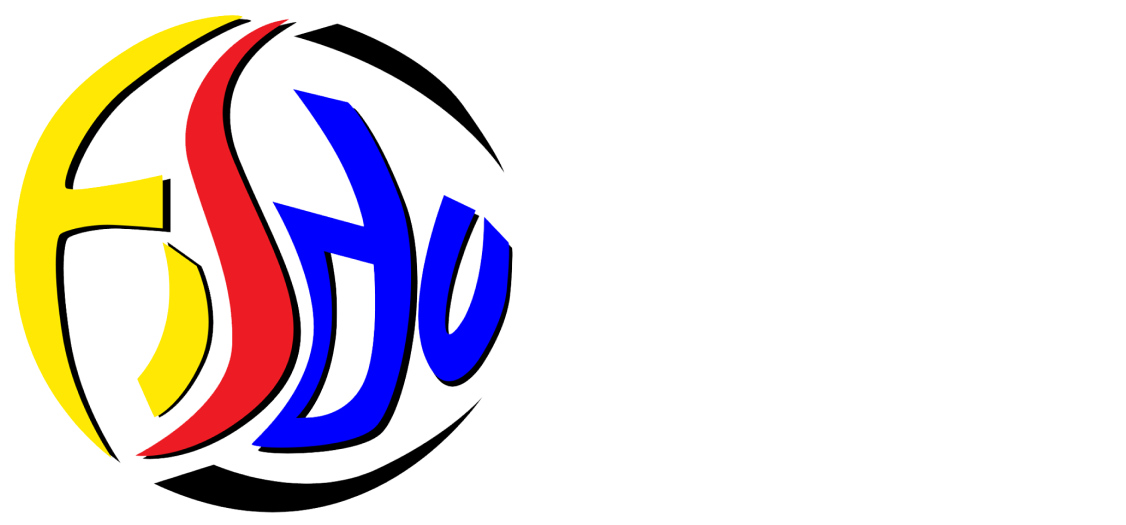What is Barrio Fiesta?
Barrio Fiesta, or “Barrio” for short, started during the 2000-2001 school year and is FISDU’s annual culture show. It is entirely student-run and created from scratch each year – from scripts, to dance choreographies, props, sound, advertisement, and more!
Leadership
Barrio comes together primarily under the direction of Barrio co-chairs, who in turn oversee various committees, each of which are run by a committee chair or chairs.
Co-chairs
Each summer term, interested FISDU members can apply to become Barrio co-chairs for the subsequent school year. Applicants go through an interview process with e-board, who hold a final vote to decide the next co-chairs by the end of the term. etc etc
Committees
-
Commercials/Documentation
Commercials/Docu create the commercials played during Barrio and visually record all of the efforts FISDU members put into the show. Responsibilities include:
- Commercial writing, directing, filming, and editing
- Barrio promotional and re-cap videos and senior video creation
- Photo and video recording of Barrio and Barrio-related events (e.g. dance practices, show run-throughs)
-
Dance
Dance chairs oversee the organization and execution of dance practices. Dance chairs may work with Facilities and Graphics. Responsibilities include:
- Appointing dance teachers
- Creation of dance schedules each term
- Ensuring that each dance is progressing as it should
-
Facilities
Facilities is in charge of space rentals. The Facilities chair position is automatically assumed by FISDU’s Internal Vice President. Facilities may work with Dance and Props/Costumes. Responsibilities include:
- Room and equipment reservations for the night before Barrio and day of Barrio
- Dance practice room reservations
- Barrio meeting and rehearsal room reservations
-
Finance/Food
Finance/Food oversees all money-related matters. The Finance/Food chair position is automatically assumed by FISDU’s Treasurer. Finance/Food may work with Facilities, Props/Costumes, Graphics, and Public Relations. Responsibilities include:
- Creation and maintenance of overall budget for all things Barrio-related
- Reimbursements to FISDU members for any personal costs taken for Barrio
- Purchase of catered food for dinner on the day of Barrio
-
Graphics
Graphics makes everything look pretty. Graphics may work with Public Relations, Documentation, Props/Costumes, and Dance. Responsibilities include:
- Ticket design
- Show program cover creation
- Cast teaser image designs
-
Props/Costumes
Props/Costumes handles design and creation of stage props and backdrops and manages new costumes, if any, for the dances. If there are a lot of new costumes for a given year, Costumes may be separated into its own committee. Otherwise, Props is generally the focus. Props may work with Scripts and Graphics. Responsibilities include:
- Stage prop and backdrop creation
- Stage layout planning for all scenes
- Costume know-how
-
Public Relations
PR spreads the word about Barrio. PR may work with Finance, Graphics, and Documentation. Responsibilities include:
- Advertisement
- Ticket and ad sales
- Barrio program creation, printing, stapling
-
Scripts
Scripts writes Barrio’s script based off of the theme chosen for the year. Scripts may work with Props/Costumes and Commercials/Documentation. Responsibilities include:
- Script creation (includes dialogue, stage directions, props instructions, and commercial breaks)
- Ensuring that Filipino cultural elements are incorporated into the scripts
-
Sound
Sound is in charge of audio. Responsibilities include:
- Ensuring high audio quality and level volumes
- Recording voiceovers for the show and commercials, if applicable
- Gather actors/actresses and extras for voiceover recording sessions
Dances
Barrio is filled with two main types of dance – (1) traditional Filipino, and (2) modern, typically hip-hop based dances.
Traditional
-
Binasuan
Binasuan is a colorful and lively dance from the town of Bayambang, Pangasinan. It shows the skills and grace of its dancers with balancing cups on the heads, palms, and arms of the dancers. The three drinking glasses, which are half-filled with rice wine, are gracefully and carefully maneuvered as they roll and spin to fast-paced music. Binasuan is a Pangasinan phrase meaning “with the use of a drinking glass” and is often performed at weddings, birthdays, and fiestas while dancers show their skills by not dropping or spilling their glasses.
-
Maglalatik
Depicting a fight between the Moros and the Christians over prized latik (coconut milk curds), Maglalatik was originally performed in the town of Biñan, Laguna, as a mock-war dance that originated from the time of Spanish rule. This dance was also performed as tribute to the patron saint of the town and of farmers, San Isidro de Labrador. The dance consists of four parts: the palipasan and baligtaran, which show heated and intense combat, and the paseo and sayaw escaramusa, which show the reconciliation of the two factions. All the men use harnesses of coconut shells on their backs, chests, hips, and thighs, which are
hit with the half shells held in their hands. -
Pagapir
Pagapir is a fan dance depicting the royal or affluent manner of walking from the Maranao people of Lanao del Sur in Mindanao. Ladies of the royal court gracefully manipulate their aper (fans) while emphasizing their stately kini-kini (small steps). These well-defined and graceful movements symbolize their good upbringing and prominent family backgrounds.
-
Pandanggo sa Ilaw
This popular dance originates from Lubang Island, Mindoro in the Visayas region and is performed to display the grace and balance of the dancers. The term pandanggo comes from the Spanish word fandango which is a dance characterized by steps and clapping. This particular dance involves the presence of three candles, on balance on the head and one on each hand.
-
Sayaw sa Bangko
Bangko originates from Pangasinan. It is performed by a mixed-gender couple on a narrow bench, inching and hopping from one end to another. Dancers show skill in staying up on the benches as they exchange places by moving their way around or as the girl is thrown in the air while the boy moves to the other end. They do not compete but rather complement each other so that no one falls. It is usually performed during town fiestas.
-
Singkil
Singkil derives its name from Muslim princesses’ ankle bracelets with belts. Perhaps the oldest and truly Filipino dance, Singkil recounts the legend of “Darangan,” originating from the Mindanao’s Maranao people. This 14th century tale tells Princess Gandingan’s story, who was trapped in a forest during an earthquake caused by the diwatas, or fairies. The criss-crossed bamboo poles represent the falling trees that the princess avoids as her umbrella-bearing slave accompanies her throughout the ordeal. Finally, she is saved by the prince.
-
Tinikling
Tinikling is one of the most well known and popular dances of the Philippines. Originating on the island of Leyte in Visayas, it is now regarded as the Philippines’ national folk dance. Dancers imitate the movements of the tikling birds dodging the farmers’ bamboo traps by copying the their legendary grace and speed as they skillfully maneuver between large bamboo poles clapping to the rhythm of the rondalla music.
Modern
- Boys’ Modern (all-male)
- Girls’ Modern (all-female)
- Couples’ Modern (mixed-gender pairs)
- Co-ed Modern (mixed-gender)
- Modern Tinikling (mixed-gender, a modern adaptation of traditional tinikling)

